A Bit of Science and a Lot of Fun!
It was a great day of being out on the sea ice for my very first time. I got much more comfortable driving a snow machine on the sea ice as well as figuring how to regulate how cold/warm I am with varying layers and coats and balaclavas to keep warm enough and not sweat and also not get frozen fogged up goggles.
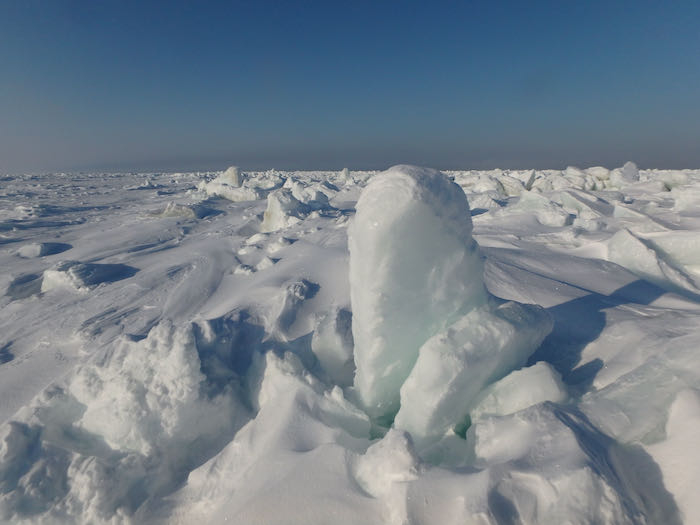
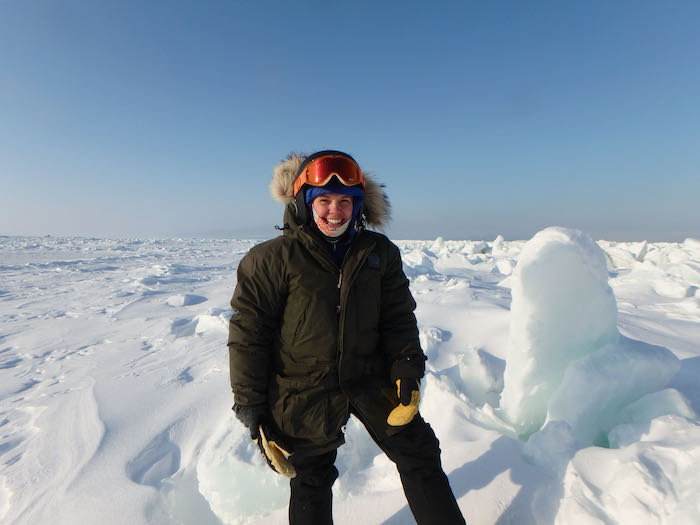
Winds, Weather, Density Gradients, and More
The complexity of variables creates very dynamic movement at the different depths and layers or stratigraphy of the Arctic Ocean. Depending on where people are observing, the water moves in different directions. The surface water moves in different directions than the deeper ocean currents. You can explore the Arctic Ocean Circulation with this interactive from Woods Hole Oceanographic Institution.
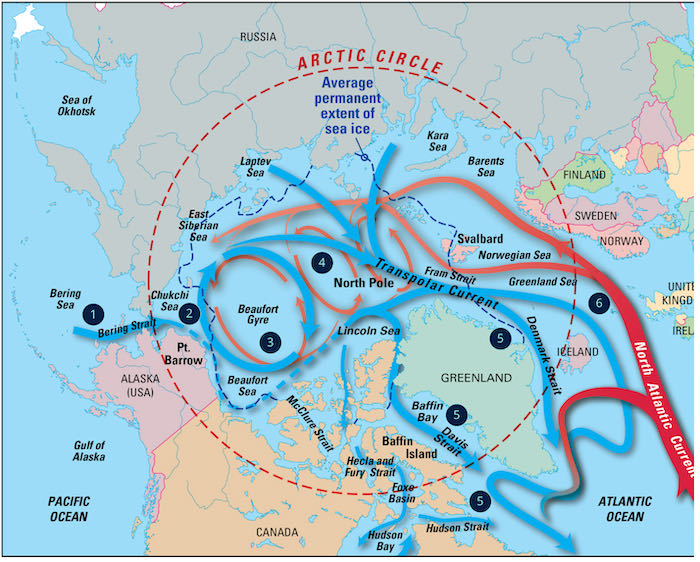
Today we deployed tilt meters for a colleague at Pacific Northwest National Laboratories who is interested in harvesting energy from the currents just below the sea ice as a potential source for renewable energy. We utilized a protocol that was inspired by Andreas Muenchow, professor at the School of Marine Science and Policy at the University of Delaware to deploy tilt meters. The tilt meters measure the angle of currents. We will retrieve the tilt meters next week before heading home so the data collected can be shuttled off to computer for analysis.
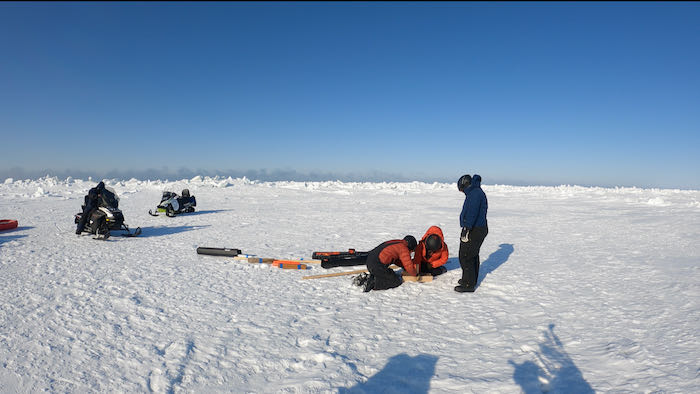
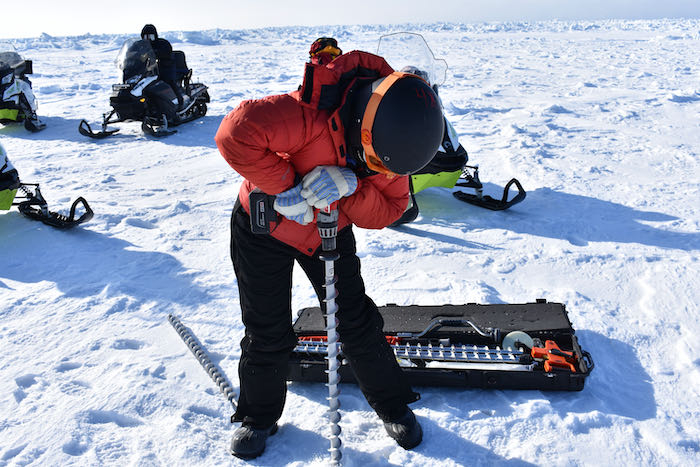
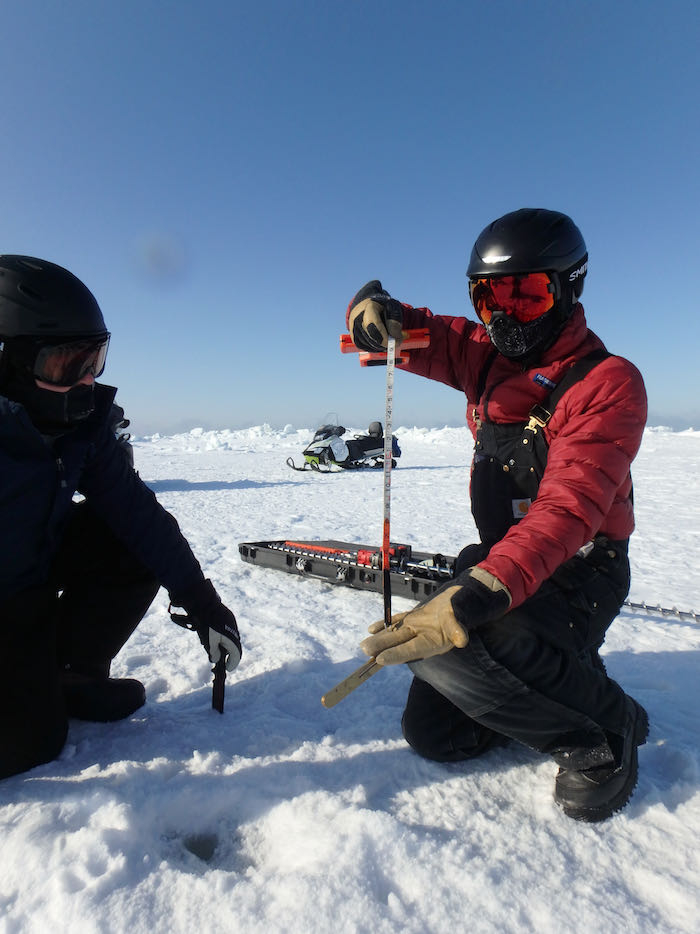
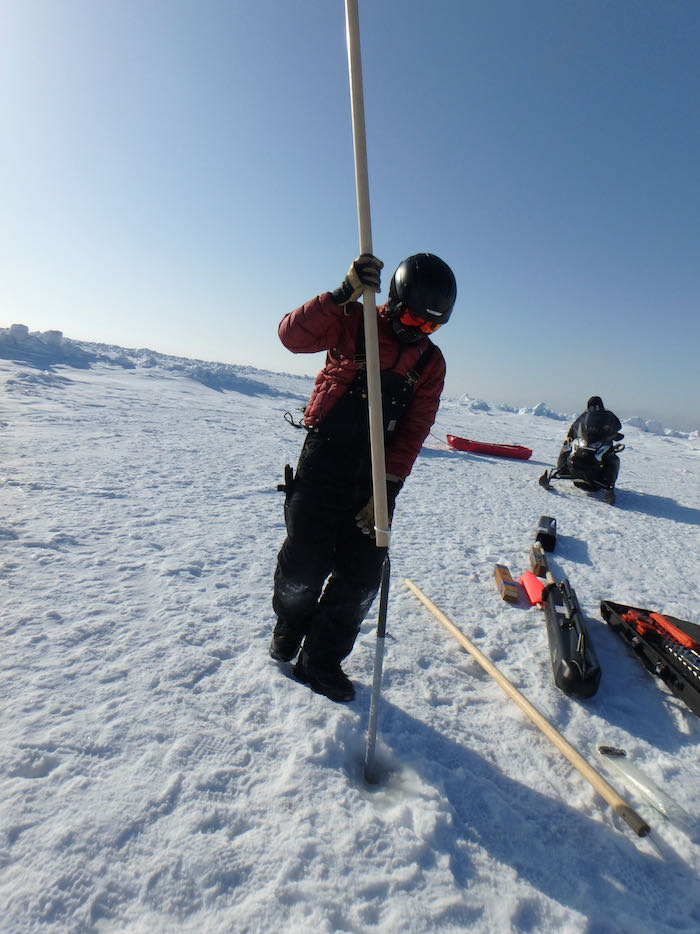
The sea ice and the open water on the surface of the Arctic Ocean is typically influenced by the current weather conditions (wind). In the Beaufort SeaThe Beaufort Sea lies to the north of Alaska and the Yukon and Northwest Territories. off the coast of northern Alaska, the sea ice is moving in a clockwise direction. We know this as we collect position data with Arctic buoys.
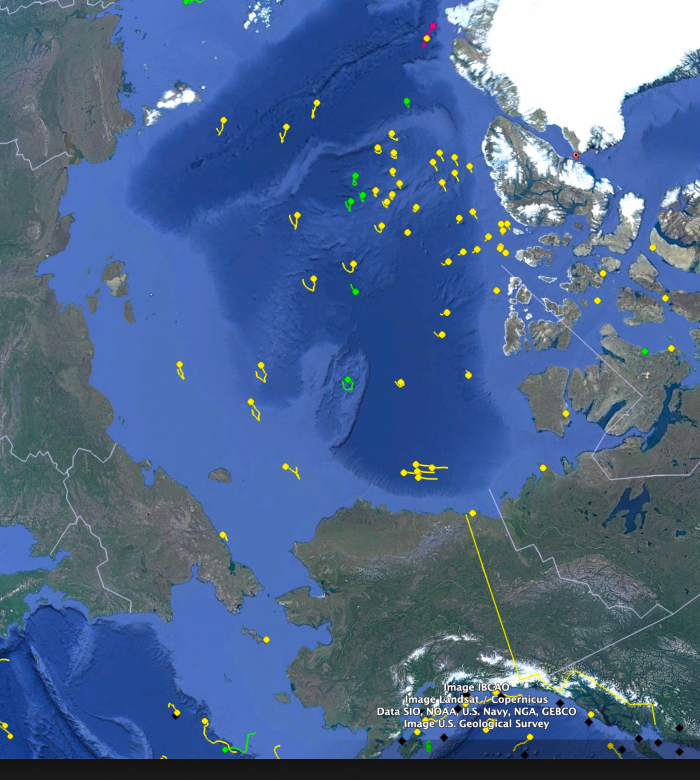
The current in the deeper ocean layers is driven by variation in salinity creating density gradients. There is also a relationship with the current and the coast. Generally in the northern hemisphere, the coastal current follows the coastline with the coast on the right hand side and it is the opposite in the southern hemisphere.
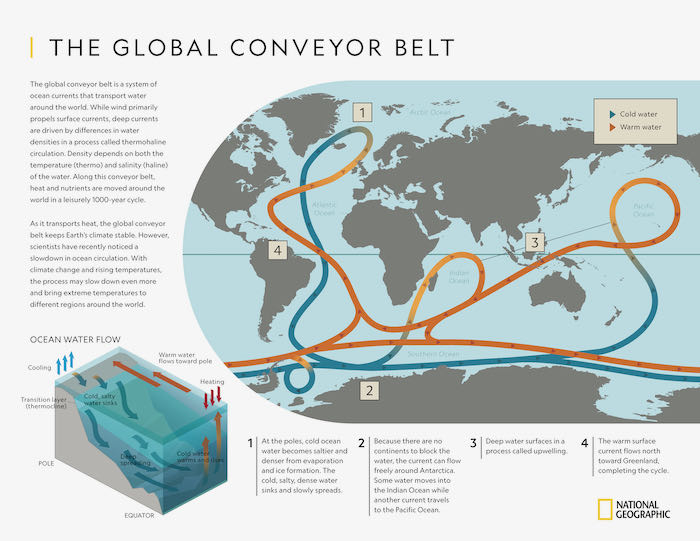
Engage with IABP AK Spring 22 Deployment Expedition
- Subscribe to these Journals by Email on PolarTREC virtual basecamp page
- Write in questions and comments at the bottom of journal entries
- Listen to live KWBR radio interview on Friday April 1 at 9:30 am (mountain time)
- Participate in April 5 PolarConnect live stream event at 9:00 am (mountain time)
- Follow on Instagram @Wild_Rose_Education
- Follow on Facebook @WildRoseEducation
- Follow #ArcticRuminations on other social media channels


Comments